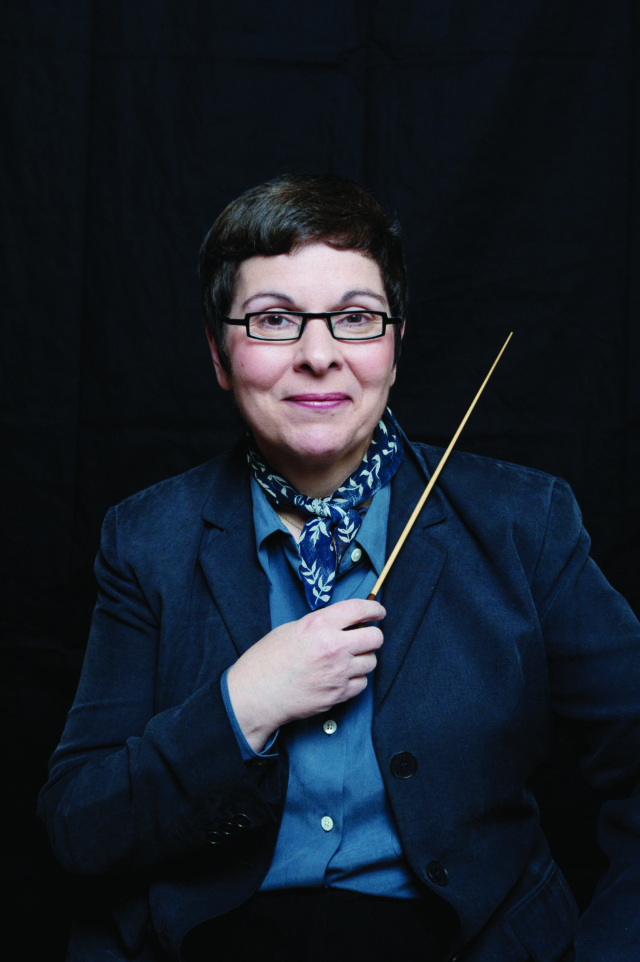
There are lightning and thunder, leaping tigers and creeping serpents.
All of that and more is portrayed musically in The Creation by Joseph Haydn, but conductor Cynthia Katsarelis wants you to know that they are happy tigers. “It’s almost two hours of ecstatic happiness,” she says of Haydn’s oratorio, which she will conduct this weekend in Denver and Boulder with the Pro Musica Colorado Chamber Orchestra and the Colorado Masterworks Chorus.
Soloists will be soprano Amanda Balestrieri, tenor Steven Soph and bass Jeffrey Seppala.
To understand all of that happiness, it is helpful to know the background of the piece. In 1791 Haydn was in London for a series of concerts presenting his symphonies before enthusiastic English audiences. In May and June of that year, he attended the annual Handel Festival at Westminster Abbey, where he heard Messiah and other Handel oratorios. Deeply impressed, he wanted to write a similar work of his own.
Several years later he was given a text, describing the biblical six days of creation and the Garden of Eden. The German text Haydn received was translated into English by the director of the Imperial Library in Vienna, Baron Gottfried van Swieten.
Although van Sweiten’s English was sometimes clumsy, his translation did draw upon the English texts that had inspired the German libretto, taken from the King James Bible and Milton’s Paradise Lost. That English text is often preferred for performances of The Creation, and it is the version that Katsarelis chose.
“I really want the English recitatives to be in the King James English,” she says. “And the text painting (the musical depiction of the text) is so delightful I don’t want anybody to miss it — the words for snow, hail, thunder, lightening, tiger and so forth.”
Haydn’s charming musical descriptions of the creatures and other aspects of creation are one source of the music’s good cheer. Another is that the work dates from the Enlightenment, a time when people were optimistic about the world — that and the fact that Haydn ends the story with Adam and Eve’s happy first hours in the Garden of Eden, before the fall.
“I think it’s a product of its time,” Katsarelis says. “There’s the creation and it’s good. The lion’s not eating anyone yet because we haven’t had the fall.”
With the text sung in English and printed in the program, the audience will be able to follow and recognize Haydn’s musical descriptions of the many creatures mentioned in the Bible — the tiger and the lion, great whales and bleating flocks. Other highlights include the section Katsarelis calls “the weather report” — the description of “outrageous storms,” “thunders on high,” “reviving showers” and “wasteful hail.”
Most famous of all is Haydn’s depiction of chaos, at the very beginning of the oratorio, and his dramatic setting of the words, “And there was light.”
Another passage that Katsarelis likes is the beginning of the first day. “The first sunrise is particularly sublime,” she says. “I’m really looking forward to that.”
Katsarelis has a special fondness for Haydn’s music. Pro Musica Colorado has performed many of his less known early and middle symphonies, and she has played many of his string quartets as a violinist. He is a composer, she says, who is under appreciated.
“I just love his music,” she says. “It’s always inventive, always really charming.
“I think he’s overshadowed by Mozart and Beethoven, and I don’t see the reason for it.”
All of the happiness in the score does present a kind of challenge to the performers. “The problem of the piece is that it doesn’t have the dramatic tension of anything bad happening,” Katsarelis says. “It’s amazing that it can be so happy for two hours, but it’s kind of difficult to maintain.”
On the other hand, she appreciates the cheerfulness because of the tense and threatening times we live in. “I was studying the piece this summer after Orlando and Istanbul and Pakistan and all of these terrible things happening,” she says. “So it was kind of a vacation from all of that.”
She also believes Haydn’s music provides more than just an escape from the difficult times and the harshness of the political campaigns, especially for Americans. “I think The Creation comes from a time that we Americans look to with nostalgia, because [that time represents] the principles from which our nation was founded.”
And maybe, she says, The Creation offers us more than an escape. “The happiness and gratitude expressed in the choruses — this is also who we are,” she says.
“So to some extent The Creation can call to us and remind us that we’re more than what’s happening in the news. We are much more than that.”














